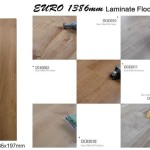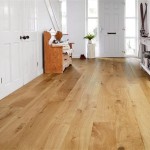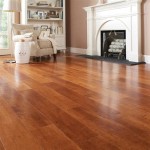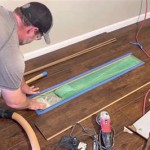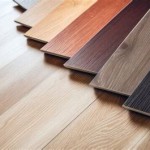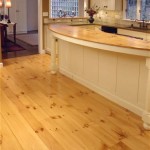Understanding Engineered Wood Flooring Vs. Hardwood
Choosing the right flooring for your home can be a daunting task, especially when confronted with the array of options available. Two popular choices often come up: engineered wood flooring and hardwood flooring. While both offer the allure of natural wood aesthetics, understanding their key differences can help you make an informed decision based on your needs and preferences.
Construction: A Deeper Dive
The fundamental difference between engineered wood flooring and hardwood flooring lies in their construction. Hardwood flooring, as the name suggests, is made from a single solid piece of wood. Engineered wood flooring, on the other hand, consists of multiple layers. The top layer is a veneer of real wood, typically thinner than solid hardwood, adhered to a core made of plywood or other wood composites. This core provides stability and resistance to warping, making engineered wood flooring a more dimensionally stable option.
The multi-layered structure of engineered wood flooring allows for greater versatility in design. Manufacturers can offer various wood species for the top layer, and the core can be engineered to withstand different levels of moisture. This makes engineered wood flooring suitable for installation in areas where solid hardwood might be unsuitable, such as basements or kitchens.
Durability and Sustainability
Both engineered wood flooring and hardwood flooring offer a degree of durability, but their performance can vary depending on factors like wood species, finish, and installation quality. Engineered wood flooring's multi-layered structure provides greater resistance to warping and cupping, particularly in areas with fluctuating humidity levels. The plywood or composite core also aids in sound insulation and provides better stability. Solid hardwood flooring, while generally more durable, can be prone to warping or cupping when exposed to moisture fluctuations.
From a sustainability standpoint, both engineered wood flooring and hardwood flooring can be considered eco-friendly choices. However, the sustainable practices employed by individual manufacturers should be evaluated. Engineered wood flooring often utilizes less wood per unit area, making it a more efficient use of resources. However, the manufacturing process of engineered wood flooring can result in higher carbon emissions due to the use of adhesives and plywood.
Cost and Installation
When it comes to cost, engineered wood flooring typically falls within a lower price range compared to solid hardwood flooring. The use of thinner veneers and the multi-layered construction contribute to this. However, the cost of installation can vary depending on the complexity of the project and the experience of the installer. Engineered wood flooring often requires less skilled labor and can be installed over existing subfloors, potentially reducing installation costs.
Solid hardwood flooring typically requires a more skilled installer and a more complex installation process, potentially leading to higher labor costs. Depending on the wood species and finish, solid hardwood flooring can be significantly more expensive than engineered wood flooring. The cost difference, however, can often be offset by the longer lifespan and potential resale value of solid hardwood flooring.
Maintenance: Keeping Your Floors Looking Great
Both engineered wood flooring and hardwood flooring require regular maintenance to keep their appearance and durability intact. Dusting, sweeping, and occasional mopping are essential for both types. Both can be refinished multiple times, but the refinishing process for each type can differ. Engineered wood flooring typically has a thinner veneer, which limits the number of refinishing cycles it can undergo. Solid hardwood flooring, with its thicker layers, can handle multiple refinishing cycles over its lifespan.
The maintenance needs and refinishing potential of each type should be factored into your decision. If you anticipate frequent changes in decor or plan to sell your home in the near future, the refinishing capabilities of solid hardwood flooring might be more advantageous. However, if you plan on staying in your home for a longer period and prefer a more practical and durable option, engineered wood flooring might be a better choice.
Final Thoughts
Choosing between engineered wood flooring and hardwood flooring ultimately depends on your individual needs, budget, and aesthetic preferences. Consider the factors discussed above, such as cost, durability, maintenance, and sustainability, to make an informed decision. Remember, both options offer their own unique sets of advantages and drawbacks. By carefully weighing these factors, you can select the flooring that best suits your home and lifestyle.

Solid Vs Engineered Hardwood Which Is Better

Solid Hardwood Flooring Vs Engineered Honest Review

Hardwood Vs Engineered Wood Flooring Which Is Better Bessemeter

Engineered Wood Flooring Vs Solid Hardwood

Engineered Vs Solid Wood Flooring Main Differences Esb

Solid Vs Engineered Quality Hardwoods Superior Design Palo Duro

Solid Vs Engineered Hardwood Floors What S The Difference

Solid Vs Engineered Hardwood Which Is Better

In The Know Engineered Hardwood Flooring Vs Solid

Blog Engineered Vs Hardwood San Marcos Tx Quality Floors More
See Also
